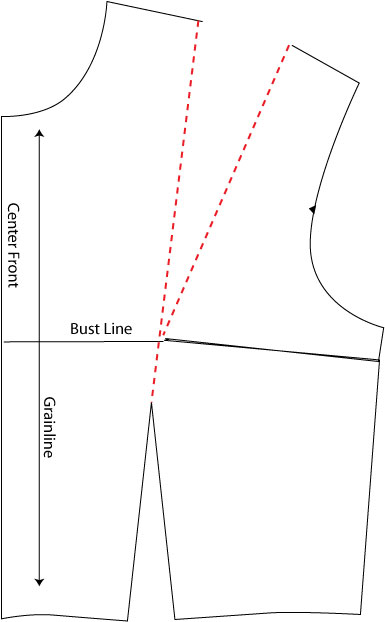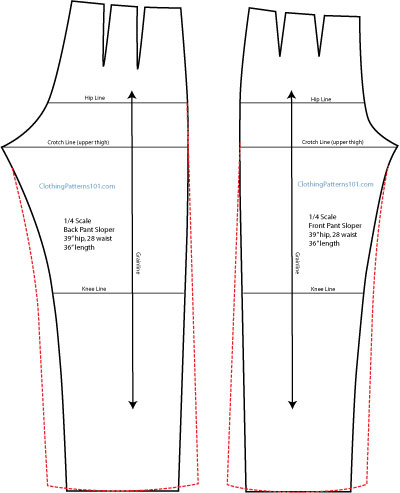- Clothing Patterns 101
- Frequently Asked Questions
Frequently Asked Questions about ClothingPatterns101.com
I've had quite a few questions about the information on ClothingPatterns101.com, how to access information, where to start, etc.
So, here are a few of the most common questions and their answers. I hope you find this helpful, and feel free to contact me at info@clothingpatterns101.com if you have any questions not answered here!
1 . What is the purpose of this site?
ClothingPatterns101.com is designed to help the experienced home sewer or amateur seamstress take their skills to the next level - creating and designing their own clothing and patterns. After making clothes with commercial patterns, you're ready to branch out and create something uniquely you! And we're here to help.
2. Can you teach me how to sew?
While there are a few videos on the site (and at the ClothingPatterns101 YouTube Channel) that demonstrate simple sewing techniques, the purpose of this site is to teach you how to make patterns, not how to sew.
There are websites and classes online that can help you with sewing. I recommend some of the classes from Craftsy - they do a great job!
3. Do I need to know how to sew before I make patterns?
Ideally, yes.
First, if you're already accustomed to making clothing using commercial patterns, you'll be familiar with the details and information required on each pattern piece.
Second, when you design a garment and make the pattern, you'll have to make some decisions about styling details and the functional aspects of the pattern. For example, are you going to use a zipper in your dress, or a button closure? Those closures are each patterned differently - and you must know how the garment will go together (how it will be sewn) to make the pattern correctly.
4. Will this site help me become a fashion designer or get a job in the fashion industry?
Well, it depends.
You can certainly become a "fashion designer" if you want to start your own business doing custom work, or make and sell your creations on Etsy or in your own boutique. Learning to make your own patterns allows you to take control of your sewing and design, and to create exactly the style you imagine.
However, if you plan on a career in the apparel industry, I can tell you that almost any company looking for a pattern maker or designer is going to be looking for a candidate with a 4-year degree in fashion.
As I said in question #1 - this site is designed for experienced home seamstresses to improve their skills. It does NOT take the place of a complete education in fashion if you want a career with an established apparel company.
5. What tools or supplies do I need to get started? Is it expensive?
Not at all! In fact, the few specialized tools you'll need are all readily available at your fabric store, sewing center or on Amazon.com. They'll probably cost about $25 all together. The site includes a list of the "must-haves", as well as a few others that are nice to have, but not necessary.
Of course, you'll need basics like scissors, paper, pencils, and tape - but I assume you already have those.
6. How long does it take to learn to make my own patterns?
You can go at your own pace and take all the time you need.
This site offers the basics of pattern design. It's intended for the (somewhat) experienced home seamstress, to help improve and increase her skill level. Depending on how much you want to learn, you can pick up a few tips in just minutes - or you can spend a lifetime learning new techniques (as I have).
I would allow at least a week for creating and fitting your block. After that, each technique you'll use and how you use it will probably be another day or so.
7. What is a "block" and why do I need to make one?
A block is a very basic pattern, with absolutely NO styling details (no collar, pockets, etc) and relatively close fitting. It's just a really, really, boring dress!
But the benefit of having a block is that you can use that simple, boring dress to design and make dress, skirts, tops and blouses with exactly the styling details you want to add, and none that you don't want.
And - everything you make will fit you, every time! If you're tired of shortening the sleeves or adjusting the bust on every pattern you ever use, you'll never have to do that again. Once your block as been altered and adjusted to fit you, every sleeve you ever design will fit, too. The fit is built in!
8. Why do you use a commercial fitting pattern to make the block? What if I can't find one, or what if I want to draft my block (from my own measurements)?
In the instructions on this site, I use a commercial fitting pattern to create the block simply because drafting from measurements is a rather complex job, and I wanted to keep it simple. With a fitting pattern that you buy in your size (or as close a possible), you'll have to do a lot of fit adjustments (because the commercial pattern is designed for a "perfect" body, and not many of us have that!). But you won't have to do a lot of math or follow complicated instructions for drafting (which can be overwhelming if you've never done it before).
If you can't find a fitting pattern, you could draft a block from your measurements.
Drafting from measurements can be complicated and time-consuming, but theoretically should result in a better fit. However, you'll still need to make fit adjustments and alterations. Your first draft will virtually never be perfect, and you'll still go through the whole fitting process.
9. What if I don't want to draft a whole pattern? Can I just alter a pattern I buy and just change the sleeve, neckline, or other design detail?
Yes, you can. But bear in mind that all of my instructions assume you are using the basic block to create a full sleeve, boat neck, pleated skirt, etc. If you are using a pattern that already has some style ease or some details, you'll have to take that into account as you re-design the pattern.
For example, if you are using a sleeve pattern that has some fullness at the cap, but want to add more fullness at the sleeve hem, you would not spread as much when you slash/spread the sleeve cap as I describe in the full sleeve instructions. Spread the hem as much as you'd like to achieve the style, but don't spread the cap much, if at all.
I hope this information has been helpful. There are so many things you can do with your basic block, and an unlimited variety of styles available to you when you design and make your own patterns!
Have fun experimenting with this!
Return to Clothing Patterns 101 Home Page
ClothingPatterns101.com does not sell the personal information of its users to anyone, ever.

